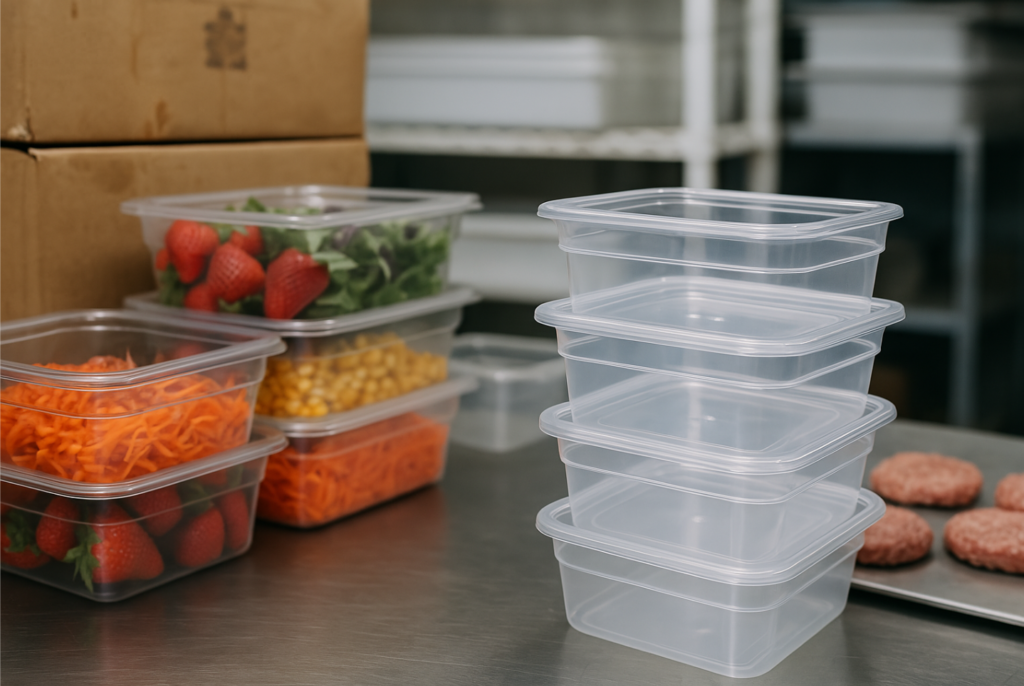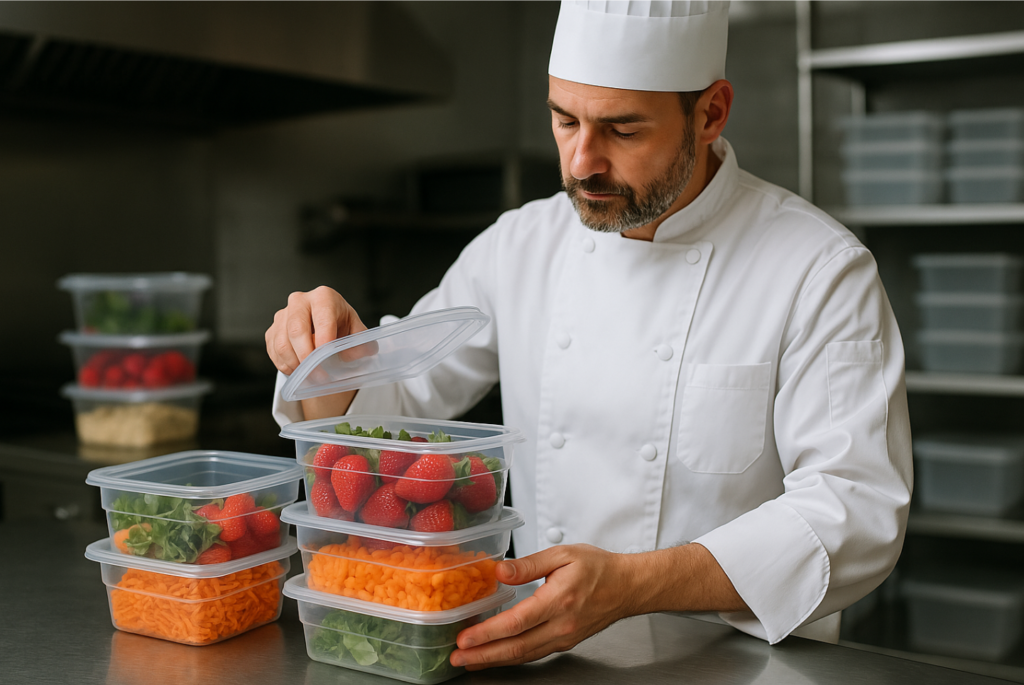Running a food business is challenging enough without worrying about sauce storage. Many owners struggle with containers that leak, break easily, or compromise food safety. I understand these frustrations all too well.
Plastic sauce containers are the preferred choice for food businesses because they're lightweight, cost-effective, and food-safe. They offer excellent durability, clear content visibility, and easy portion control while meeting strict FDA requirements for commercial food storage.

As someone who's worked extensively with food packaging, I've seen firsthand how the right container choice can make or break a business. Let's explore why plastic containers have become the go-to solution for sauce storage in professional settings.
What Are the Advantages of Using a Plastic Container?
Every business owner wants to maximize efficiency while maintaining food safety1. But with so many container options available, making the right choice can feel overwhelming.
Plastic containers offer significant advantages including durability, cost-effectiveness, and versatility. They're lightweight, stackable, and resistant to breakage, making them ideal for commercial food storage and transportation.

When it comes to sauce storage, plastic containers stand out for several compelling reasons:
Safety Features
- FDA-approved materials
- BPA-free options
- Temperature resistant
- Impact-resistant design
Cost Benefits
| Aspect | Plastic | Glass | Metal |
|---|---|---|---|
| Initial Cost | Low | Medium | High |
| Replacement Cost | Low | High | Medium |
| Shipping Weight | Light | Heavy | Medium |
| Breakage Risk | Low | High | Medium |
The versatility of plastic containers extends beyond just storage. They can be used for mixing, measuring, and serving, making them an indispensable tool in any commercial kitchen. Their sealed lids prevent spills during transport, while their transparent nature allows for easy content identification.
Why Do Chefs Use Plastic Containers?
Professional kitchens are fast-paced environments where efficiency and organization are crucial. Yet many chefs struggle with storage solutions2 that slow them down or create unnecessary waste.
Professional chefs prefer plastic containers because they're practical, versatile, and help maintain kitchen organization3. These containers allow for easy stacking, clear content visibility, and efficient storage space utilization while meeting health code requirements.

The professional kitchen environment demands specific features from storage solutions:
Organization Systems
- Color-coded lids for easy identification
- Stackable design for space efficiency
- Various sizes for portion control
- Clear walls for content visibility
Practical Benefits
| Feature | Advantage |
|---|---|
| Lightweight | Easy handling during busy service |
| Durable | Withstands daily commercial use |
| Reusable | Cost-effective long-term solution |
| Dishwasher safe | Easy cleaning and sanitization |
Many chefs I've worked with appreciate the practical aspects of plastic containers. They can quickly grab what they need, portion accurately, and maintain proper food rotation systems. The containers' durability means they can withstand the demands of a busy kitchen, from frequent opening and closing to stacking and unstacking throughout service.
Temperature flexibility is another crucial factor - these containers can go from freezer to microwave safely, making them perfect for prep work and storage. Their seal-tight lids prevent cross-contamination and maintain freshness, essential for maintaining food quality standards.
Conclusion
Plastic sauce containers remain the top choice for food businesses because they perfectly balance safety, efficiency, and cost-effectiveness. Their versatility and durability make them indispensable in professional kitchens.
-
Discover essential strategies for maintaining food safety in storage, crucial for any food-related business. ↩
-
Learn about innovative storage solutions that can streamline operations and enhance productivity in busy kitchens. ↩
-
Discover strategies for kitchen organization that can significantly boost efficiency and reduce waste in culinary settings. ↩

